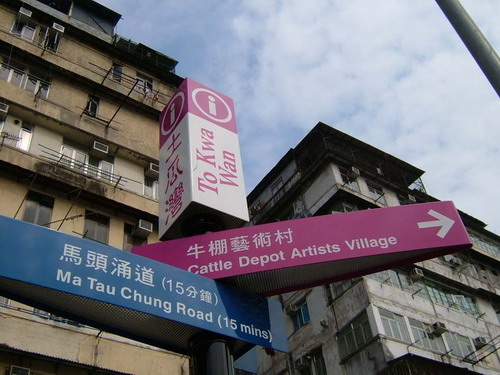'Made in Hong Kong'
Updated: 2007-06-22 09:51

Avant-garde art
Hong Kong artists have successfully developed innovative products, which can also be labeled "Made in Hong Kong".
Leading the vanguard of modern art, The Cattle Depot Art Village is a community of creative practitioners, including Zuni Icosahedron, a dominant avant-garde art group.
An independent cultural collective founded in 1982, Zuni Icosahedron has played a vital role in developing new cultural frontiers in Hong Kong and abroad over the past twenty years.
Not confining itself to the theatre performances, Zuni has spread its tentacles into the pop culture and multi-media arenas. It is also active in video, sound experimentation and installation art, as well as art education, criticism, policy research and international cultural exchanges.
According to Lin Yihua, the leading Zuni figure, avant-garde art could not have gained momentum without being incorporated into contemporary society. This belief has been followed unswervingly by various avant-garde art movements.
La Space, a non-profit contemporary visual art organization, held two art exhibitions with a theme revolving around the much-debated public cultural space in July and August 2005. The Artist Commune installed an exhibition called No Plastic Bags in October 2005 at the Cattle Depot, with many works made from junk plastic. Since the end of 2005 Helihuo Hotel by the Hong Kong-based Theatre of Silence has addressed the problems surrounding the removal of Hong Kong's old buildings.
ˇ¤The Cattle Despot Art Village
Situated in To Kwa Wan, Kln, the Village was originally a slaughterhouse 100 years ago. The Hong Kong Art Development Council moved there in 1999. There are several halls where exhibitions of photography, sculpture and painting are constantly held. Most of the exhibitions are free of charge. Although renovated, the traditional architectural style of the buildings remains unchanged.
ˇ¤The Fringe Club
The Fringe Club innovatively transformed the old Dairy Farm Cold Storage Warehouse into a lively contemporary art space. The building now houses two theatres, two gallery spaces, a photo gallery, two caf¨¦/bars, a rehearsal room, a pottery studio and showroom, a roof garden and the award-winning "M at the Fringe" restaurant.
Since its founding in 1983, the annual Fringe Festival,modeled after the Edinburgh Fringe Festival, has offered an uncensored open platform for all visual and performance art.. The annual festival was reworked in 1999 to promote urban culture featuring local and international shows and exhibitions. These encompass a wide range of arts disciplines: music, dance, theatre, comedy, the visual arts, film, literature, multi-media, fashion and even food. In 2004 the festival was renamed the City Fringe Festival, and usually takes place at the beginning of the year.
ˇ¤The Asia Art Archive
Founded in 2000, the Asia Art Archive is the first centre in Hong Kong
dedicated to the documentation of and cataloguing materials related to
contemporary Asian art for public access through its library, online database
and website.
 | 1 | 2 | 3 |  |

